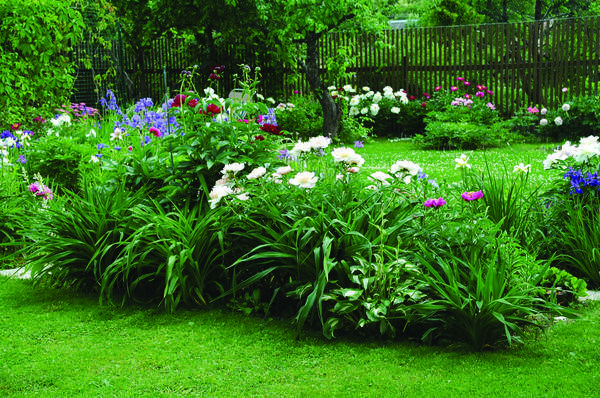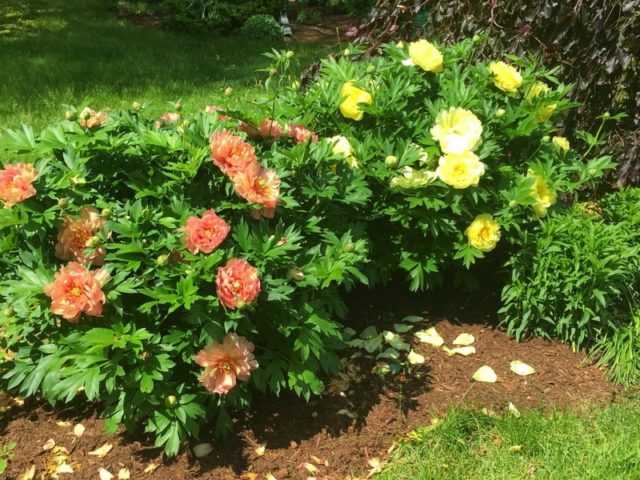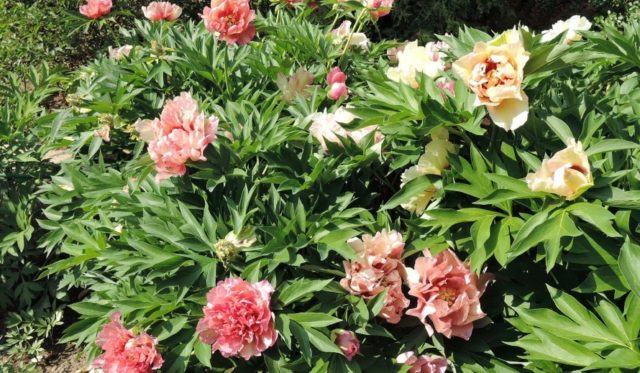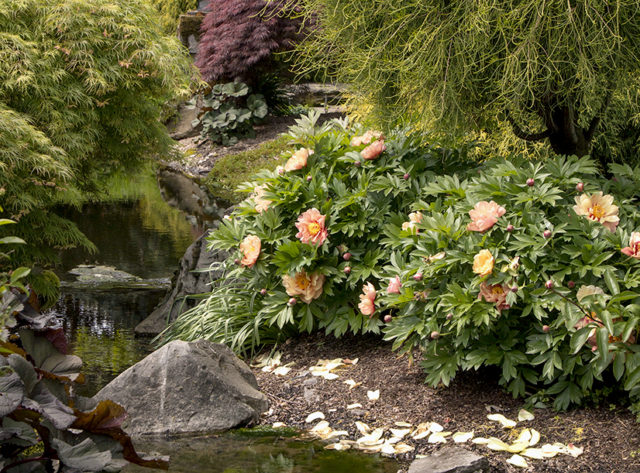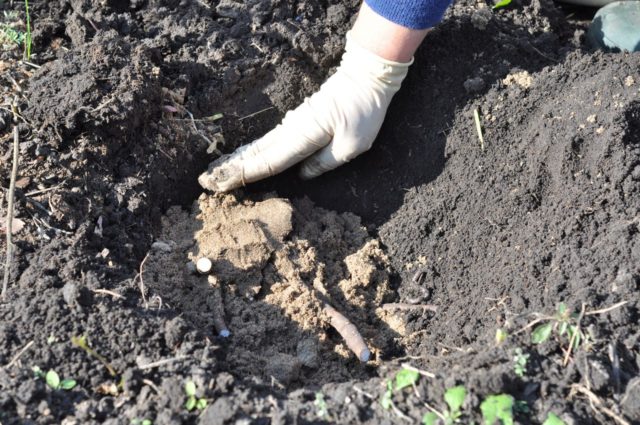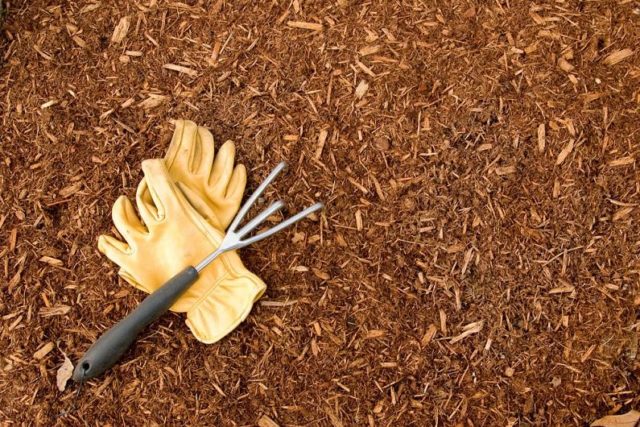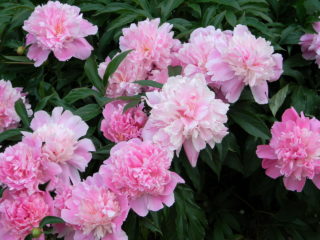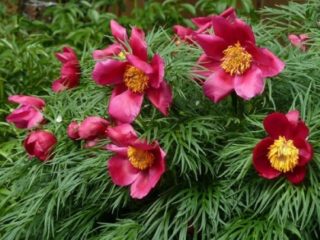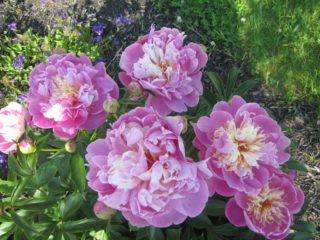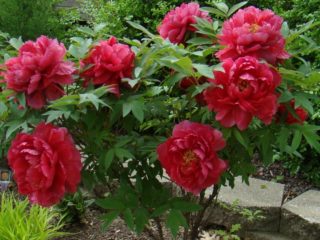Content
Collis Memory Peony is a sprawling bush with strong trunks. Gives several beautiful delicate apricot flowers with cherry splashes. Collis Memori has good winter hardiness: it can withstand winter frosts down to -35 ° C. This allows it to be grown in almost any region of Russia.
Description of ITO-peony Collis Memori
Peony Collis Memori belongs to ito-hybrids, that is, it is obtained by crossing herbaceous and tree-like specimens. Its bushes show signs of both one and the other variety.
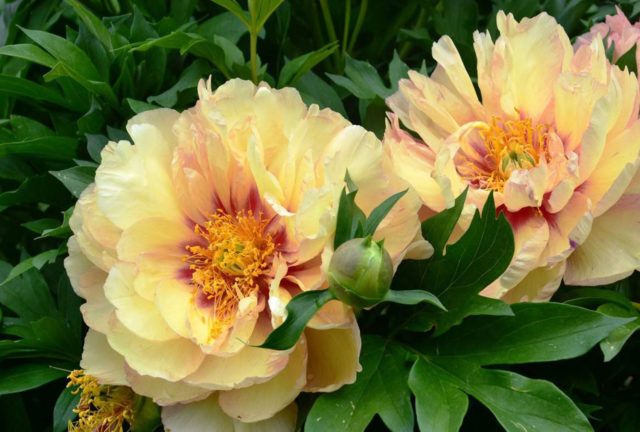
Peony gives beautiful flowers of cream color
Spreading bushes, rather tall (90-100 cm). Stems are dense, do not need support. Leaves of deep dark green color, slightly dissected. By autumn, they become crimson, which gives the plant a special appeal. The first flowering occurs in 2-3 years, and the bush becomes the most beautiful after 5 years. The culture is photophilous, but tolerates light partial shade well. In the south, a little shade from trees or shrubs is desirable.
Peony Collis Memory belongs to the 3-4 zone of winter hardiness, it can be grown in the following regions of Russia:
- Central part;
- Ural;
- Southern Siberia;
- Far East.
Since the flower loves the sun, it grows best in areas with a lot of sunny days.
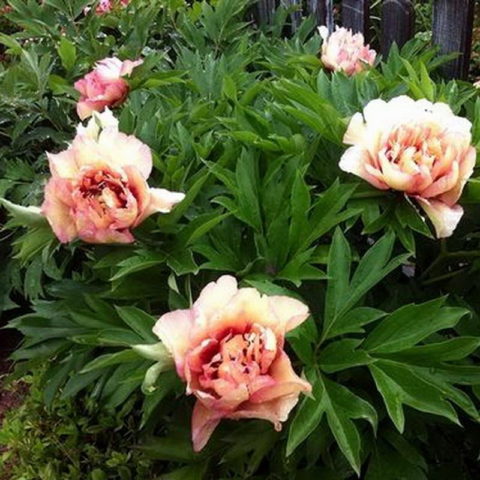
Collis Memorial peonies are distinguished by their large flowers and bright green leaves.
Flowering features
The color of the petals is pale yellow, pinkish at the edges, with narrow stripes of rich cherry color. The diameter of the flowers reaches 16-20 cm. They exude a pleasant aroma, which is felt at a short distance. Terry flower, European shape. The flowering period is medium early, falls on the end of May - the beginning of June, duration - 2-3 weeks.

Collis Memori peony flowers have the correct rounded shape
The splendor of flowering depends on the care. Also, when planting a Collis Memory peony, it should be noted that this bush loves sunny, open places. The soil should be sufficiently fertile and light, not waterlogged, if necessary, a drainage layer is laid in the planting holes.
Application in design
Peony bushes are usually used in single plantings. These are bright, attractive flowers that decorate the lawn, places next to benches, gazebos and other seating areas well. Better yet, use Collis Memory in group plantings:
- in mixborders;
- rock gardens, simple flower beds or complex flower beds;
- on the banks of reservoirs.
Peonies go well with a variety of flowering crops
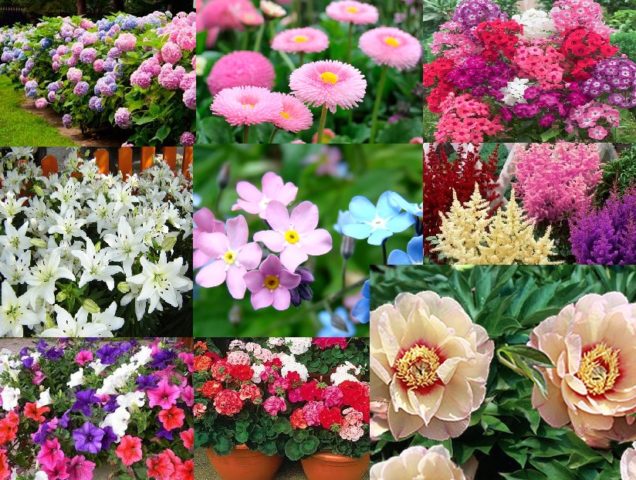
Hydrangeas, daisies, phloxes, lilies, forget-me-nots, astilba, petunias, pelargonias can grow on the same flowerbed with ito-peonies.
Collis Memory looks good in compositions with decorative perennial grass, low (up to 50-60 cm) hosts and conifers. For example, thuja can be planted in the back row or around a peony bush. You can plant junipers or dwarf firs nearby. Such compositions are appropriate in rock gardens.
You should not plant bushes next to Buttercup, which aggressively capture space, as well as next to large bushes and trees. They will not only provide a strong shade, but also neutralize the attractiveness of lush flowers.
Reproduction methods
Ito-peony Callies Memory belongs to hybrids, so it will not be possible to get new specimens from seeds. The plant is propagated in other ways:
- cuttings;
- layering;
- dividing the bush.
The last option is the simplest. It does not require much effort, moreover, the resulting "kids" are immediately ready for planting and quickly take root in a new place.
You can share a bush at the age of 4-5 years. The procedure begins in early September, approximately a month before the first frost. The bush is dug out with a sharp shovel, the rhizome is cleaned from the ground and cut with a knife so that there are 2-3 healthy shoots on each cut. They are planted in the ground with an interval between plants of 50-70 cm.
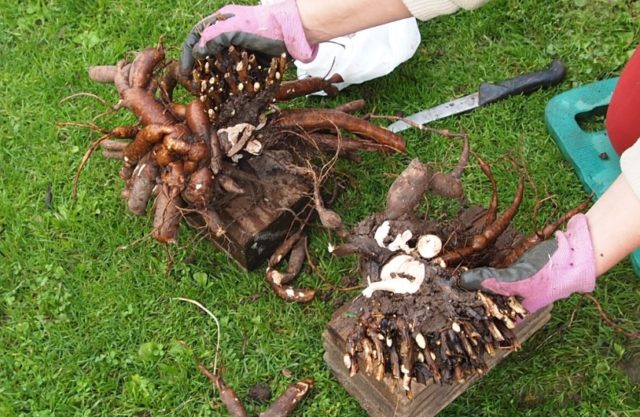
The Collis Memory peony rhizome is divided with a sharp knife, taking care not to damage it.
Landing rules
Peonies are planted in late August or early September. When choosing a location, they are guided by the design of the garden and practical considerations - the site should not be shaded or swampy. The soil is light, with a slightly acidic or neutral reaction, pH = 6.0-7.0. If the soil is known to be alkaline, you can fix it with fresh manure, citric acid (1 tsp for a bucket of water) or 9% vinegar (10 tsp for 10 liters of liquid).
For planting, a mixture is prepared from the following components:
- garden land - 1 bucket;
- compost - 20 kg;
- superphosphate - 200 g;
- potassium salt - 60 g.
Sequencing:
- The site is cleared of debris and grass, dug to a shallow depth.
- Then they dig a hole, if there are several of them, then they maintain a distance of 50-70 cm.
- The planting mixture is poured and the seedling is rooted so that the root collar remains above the surface at a height of 3-4 cm.
- Water and mulch well.
Hay, straw, peat are used as mulching materials.
For these purposes, you can use fragments of bricks, pebbles, expanded clay and other small stones.
Follow-up care
Peony Collis Memory is not too picky about care. It is enough for a plant to provide:
- Moderate (weekly) watering. In the presence of rain, additional moisture is not required.
- Top dressing 3 times per season: in April, nitrogen fertilizer, at the beginning and after flowering - a mixture of superphosphate and potassium salt.
- Root mulching (a layer of peat or sawdust conserves moisture and inhibits the growth of weeds).
- Periodic loosening of the soil, especially after fertilization.
Experienced gardeners recommend replanting peonies to a new place every 5-7 years. It is also better to do this at the beginning of autumn. For work, you will need a sharp shovel and great physical strength, since the powerful roots of peonies go to a depth of 1 meter or more.
Preparing for winter
Collis Memory peonies, like many other varieties, do not require special preparation for winter. The last time it is fed is in mid-August: superphosphates and potassium salt (for example, potassium sulfate) are given. Such dressing helps the roots to survive even severe frosts.
Leaving in early September will be like this:
- Total pruning of all branches - leaves only shoots 4-5 cm in height.
- Abundant pre-winter watering (2 buckets per bush).
- Mulching is optional, but young seedlings can be thrown with a layer of needles, peat or straw. This is especially true for the Ural and Siberian regions.
Pests and diseases
Peony Collie Memory is quite resistant not only to cold, but also to diseases. However, damage by viral and fungal infections is not excluded:
- rust;
- gray rot;
- powdery mildew;
- mosaic of leaves.
Often, typical pests parasitize on the bushes:
- aphid;
- thrips;
- ants;
- nematodes.

Therefore, back in April, as a preventive measure, the bushes are recommended to be treated with fungicides (Topaz, Profit, Skor) and insecticides (Karbofos, Biotlin, Karate and others)
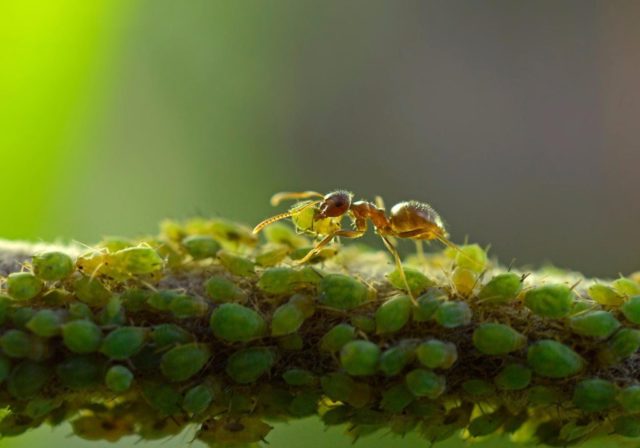
Periodically, it is recommended to inspect the Collis Memori peony bushes for the presence of pests.
Conclusion
Collis Memory Peony is an attractive shrub that produces lush, large and fragrant flowers of unusual color. Caring for it does not require special skills, so both experienced and novice gardeners will be able to grow such a flower.
Peony Collis Memorial reviews
